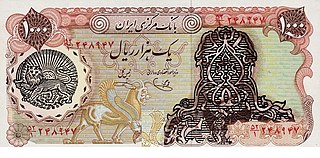
An overprint is an additional layer of text or graphics added to the face of a postage or revenue stamp, postal stationery, banknote or ticket after it has been printed. Post offices most often use overprints for internal administrative purposes such as accounting but they are also employed in public mail. Well-recognized varieties include commemorative overprints which are produced for their public appeal and command significant interest in the field of philately.
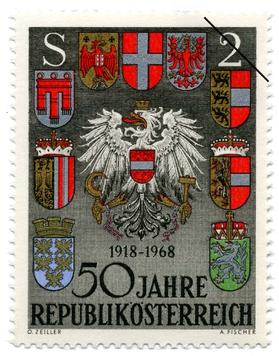
This article deals with the stamps and postal history of the Austrian Empire, Cisleithania within Austria-Hungary, and the Republic of Austria.
This is a survey of the postage stamps and postal history of the German territory of the Saar. As a border region contested between France and Germany, the Saar has a somewhat complicated philatelic history.
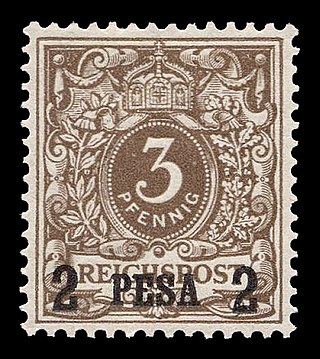
This is a survey of the postage stamps and postal history of German East Africa.
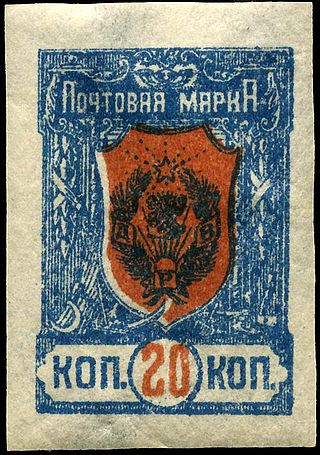
The Far Eastern Republic, sometimes called the Chita Republic, existed from April 1920 to November 1922 in the easternmost part of Siberia. It was formed from the Amur, Transbaikal, Kamchatka, Sakhalin, and Primorye regions. In theory, it extended from Lake Baikal to Vladivostok but, in May 1921, the Priamur and Maritime Provinces seceded. Although nominally independent, it was largely controlled by the RSFSR and its main purpose was to be a democratic buffer state between the RSFSR and the territories occupied by Japan during the Russian Civil War to avoid war with Japan. Initially, its capital was Verkhneudinsk, but from October 1920 it was Chita. On 15 November 1922, after the war ended and the Japanese withdrew from Vladivostok, the Far Eastern Republic was annexed by Soviet Russia.
Reichspost was the name of the postal service of Germany from 1866 to 1945.
Each "article" in this category is in fact a collection of entries about several stamp issuers, presented in alphabetical order. The entries themselves are formulated on the micro model and so provide summary information about all known issuers.
Each "article" in this category is in fact a collection of entries about several stamp issuers, presented in alphabetical order. The entries themselves are formulated on the micro model and so provide summary information about all known issuers.
Each "article" in this category is a collection of entries about several stamp issuers, presented in alphabetical order. The entries themselves are formulated on the micro model and so provide summary information about all known issuers.
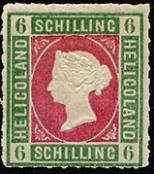
During the period when Heligoland was a British possession, about 20 postage stamps were issued between 1867 and 1890. There were up to eight printings of a single denomination and also a large volume of reprints which are known as the Berlin, Leipzig and Hamburg Reprints, respectively. The Berlin reprints are sometimes better quality than the originals. The reprints were done between 1875 and 1895. Consequently, many "old" collections contain reprints rather than originals. Some believe there were seven million reprints as compared to the known 1½ million originals, of which perhaps half were sold through the post office and the remainder sold to dealers when withdrawn from use. A few printings were never postally sold but nevertheless found their way into the hands of dealers. The stamps were printed by the Prussian State Printing Office in Berlin. They were denominated in the Hamburg Schilling until 1875, when both German Reich and British values appeared on each stamp issue. All are embossed with a silhouette of Queen Victoria excepting the four highest values which represent Heligoland escutcheons.
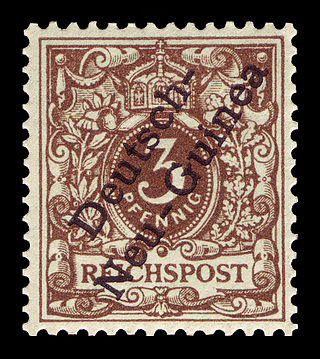
The postage stamps of New Guinea, part of present-day Papua New Guinea, were issued up to 1942.

This is a survey of the postage stamps and postal history of Montenegro.
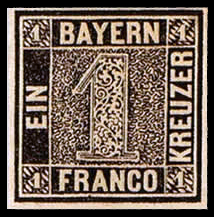
This is a survey of the postage stamps and postal history of Germany and philatelically related areas. The main modern providers of service were the Reichspost (1871–1945), the Deutsche Post under Allied control (1945–1949), the Deutsche Post of the GDR (1949–1990), the Deutsche Bundespost (1949–1995), along with the Deutsche Bundespost Berlin (1949–1990), and are now the Deutsche Post AG.

The Deutsche Post (DP), also Deutsche Post of the GDR was the state-owned postal and telecommunications monopoly of the German Democratic Republic. The DP was placed under the control of the Ministry for Postal and Telecommunication Services of the GDR(Ministerium für Post- und Fernmeldewesen der DDR - ) - a member of the Council of Ministers of the GDR(Ministerrat der DDR) - and was in operation from 1949 until the reunification of Germany on 3 October 1990.

Germania stamps are definitive stamps that were issued by the German Empire and the Weimar Republic between 1900 and 1922, depicting Germania. They represent the longest running series in German philately and are in their many variations and derivations an essential part of German philatelic collections.

The German post offices abroad were an extraterritorial network of German post offices in foreign countries with a significant German commercial interest to provide mail service where the local services were generally deemed unsafe or unreliable, such as China, Morocco, Ottoman Empire and Zanzibar. The system ended during or shortly after World War I.
The German post offices abroad were a network of post offices in foreign countries established by Germany to provide mail service where the local services were deemed unsafe or unreliable. They were generally set up in cities with some sort of German commercial interest. In early use only the cancellation mark can identify their postal use abroad; such stamps are known as "Vorläufer" (forerunner) stamps. Later stamps are identified by overprints even when not postally used. German abroad stamps started appearing in the late 19th century and reached their heyday at the beginning of the 20th century; they closed down during or shortly after World War I.

The postage stamps and postal history of Papua New Guinea originated in the two colonial administrations on the eastern part of the island of New Guinea and continued until their eventual merger, followed by independence in 1975.

This is a survey of postage stamps and postal history of the German colonies and part of the postage stamps and postal history of Germany, as well as those of the individual countries and territories concerned.
This is a survey of the postage stamps and postal history of Holstein, Schleswig-Holstein, Schleswig and incidentally Lauenberg. Separate stamps were issued for Holstein (1850), Schleswig (1864-1867), Holstein (1864-1866), Schleswig-Holstein (1865) and Schleswig (1920).















